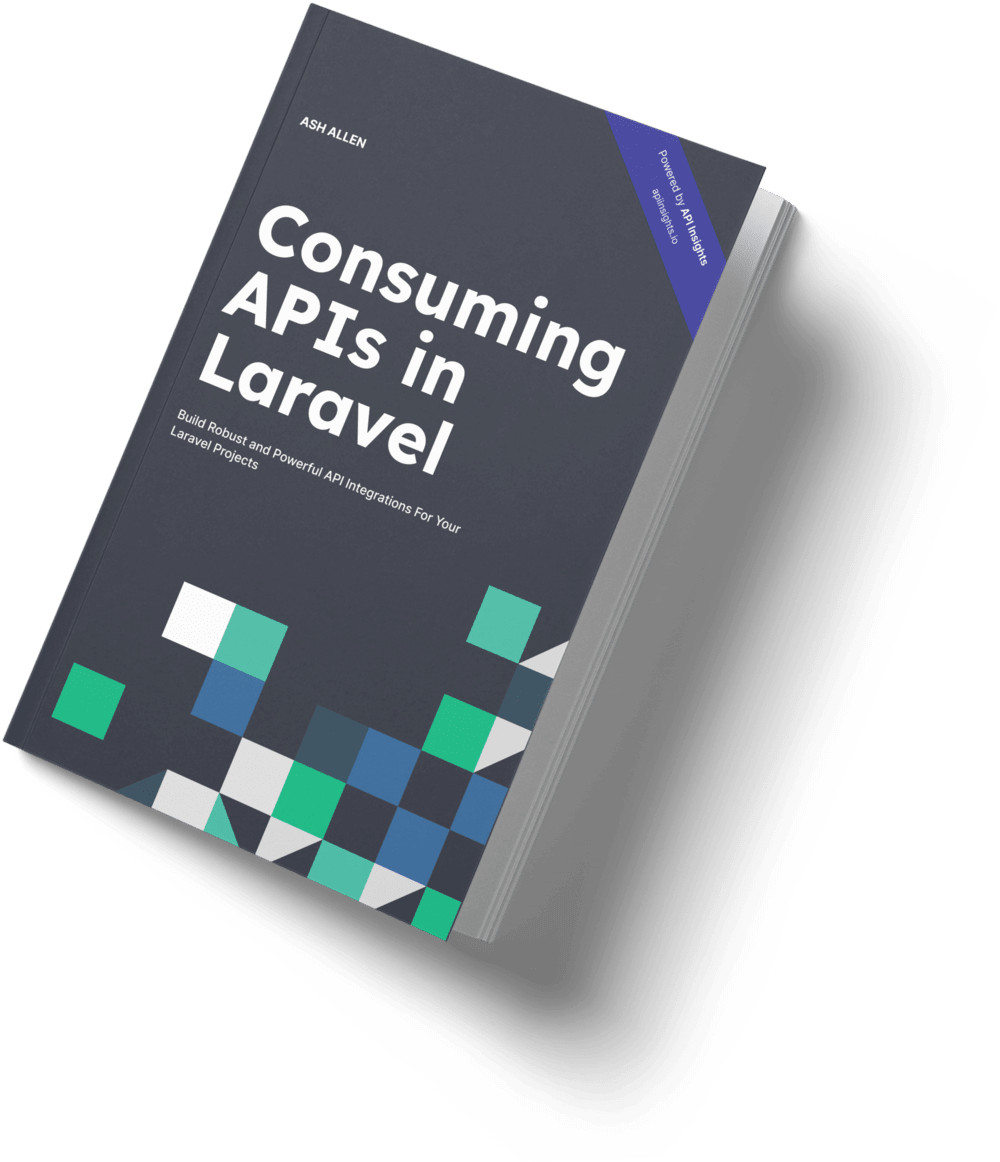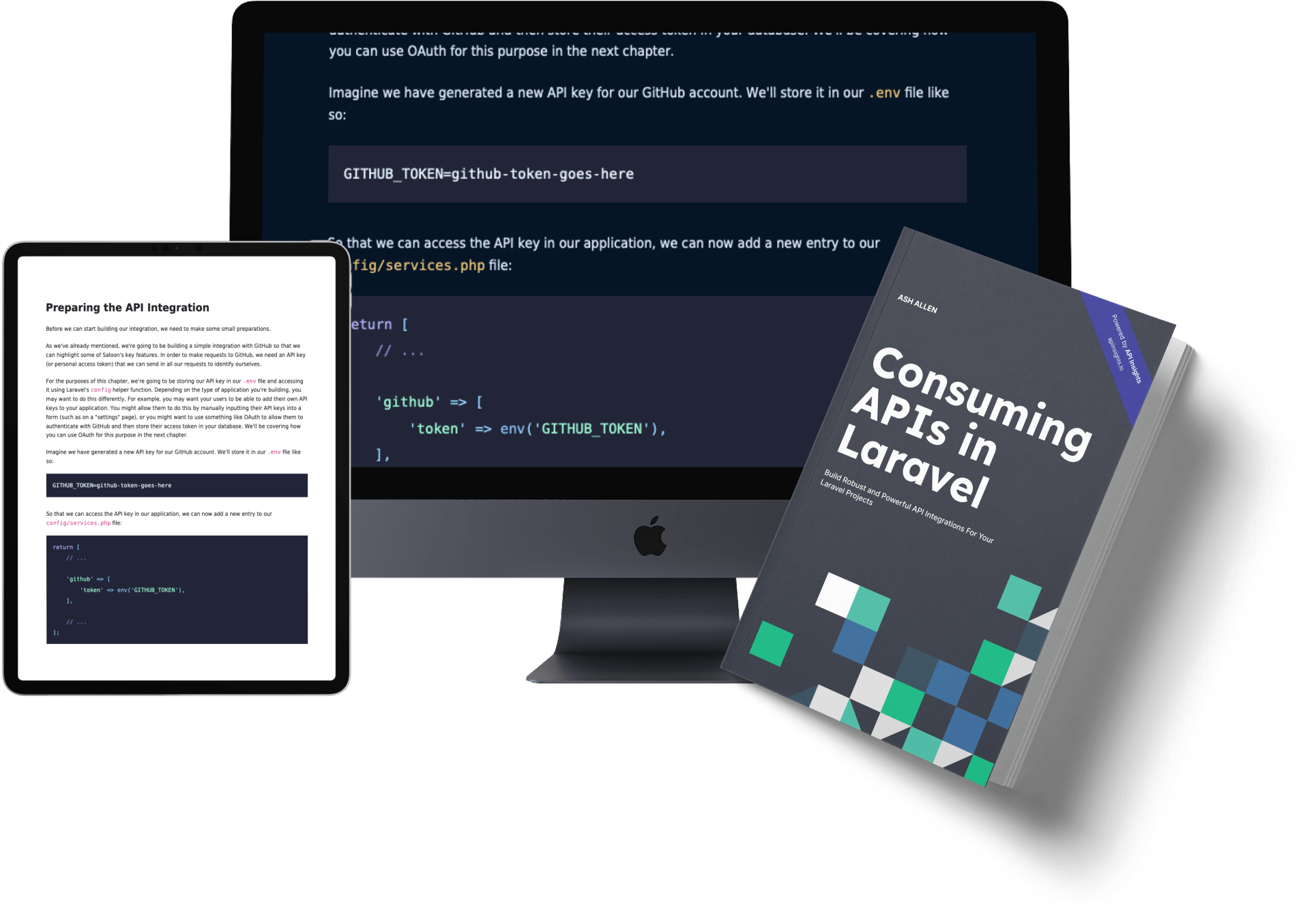Build
Robust and Powerful API Integrations
For Your Laravel Projects With Ease
Learn how to confidently integrate third-party APIs in your Laravel projects using maintainable, testable and extensible code.
The world of APIs has finally been made simple!

 Enhance Your Laravel Apps Without The Stress
Enhance Your Laravel Apps Without The Stress
 What's Covered in the Book?
What's Covered in the Book?
 Learn How to Consume APIs Using Saloon
Learn How to Consume APIs Using Saloon

 Pricing
Pricing


 About the Author
About the Author

 Testimonials
Testimonials





 What format is the book available in?
What format is the book available in?
 From the Creator of...
From the Creator of...

 Analytics by
Analytics by  Hosted using
Hosted using  Building Webhook Routes
Building Webhook Routes